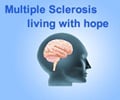Researchers at Keck School of Medicine of the University of Southern California (USC) have proven that oncogenes can change normal cells into stem-like cells.

Zhong and colleagues at the Children's Hospital of Orange County (CHOC) in California and Good Samaritan Hospital Medical Center in New York successfully converted human skin cells into brain cells by suppressing the expression of p53, a protein encoded by a widely studied oncogene. This suggests that p53 mutation helps determine cell fate good or bad rather than only the outcome of cancer.
The study is slated to appear in the online edition of Proceedings of the National Academy of Sciences, a peer-reviewed scientific journal, the week of July 18, 2011.
"When you turn off p53, people think the cell becomes cancerous because we tend to focus on the bad thing," Zhong said. "Actually, the cell becomes more plastic and could do good things, too. Let's say the cell is like a person who loses his job (the restriction of p53). He could become a criminal or he could find another job and have a positive effect on society. What pushes him one way or the other, we don't know because the environment is very complicated."
Stem cells can divide and differentiate into different types of cells in the body. In humans, embryonic stem cells differentiate into three families, or germ layers, of cells. The reasons why and how certain stem cells differentiate into particular layers are not clearly understood. However, from those layers, tissues and organs develop. The endoderm, for example, leads to formation of the stomach, colon and lungs, while the mesoderm forms blood, bone and heart tissue. In its study, Zhong's team examined human skin cells, which are related to brain and neural cells from the ectoderm.
When p53 was suppressed, the skin cells developed into cells that looked exactly like human embryonic stem cells. But, unlike other man-made stem cells that are "pluripotent" and can become any other cells in the body, these cells differentiated only into cells from the same germ layer, ectoderm.
Advertisement
Zhong said he expects that suppressing other oncogenes in other families of cells would have the same effect, which could have critical significance for stem cell therapy. Future research should focus on determining which genes to manipulate, Zhong said.
Advertisement















